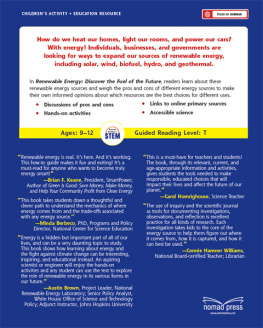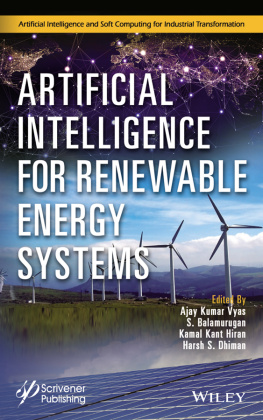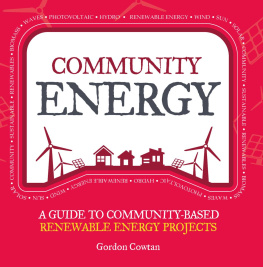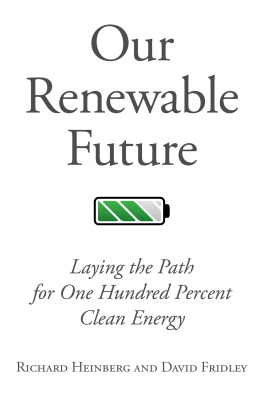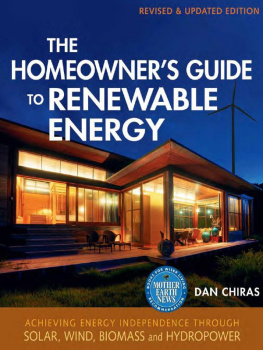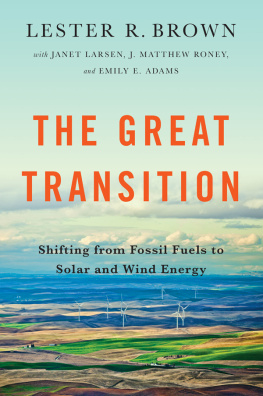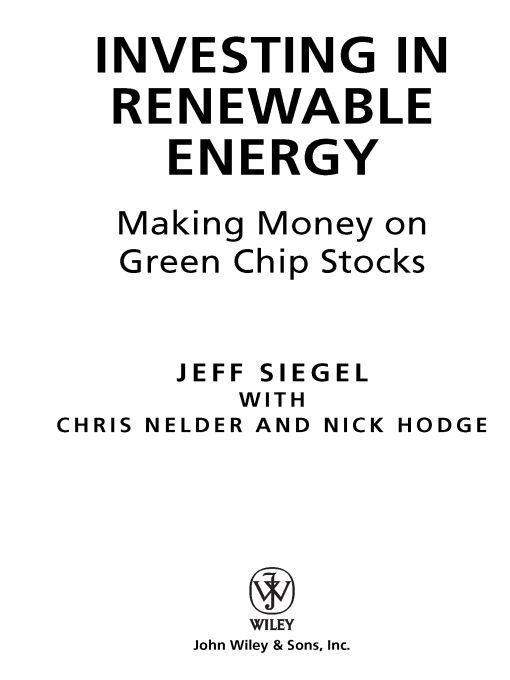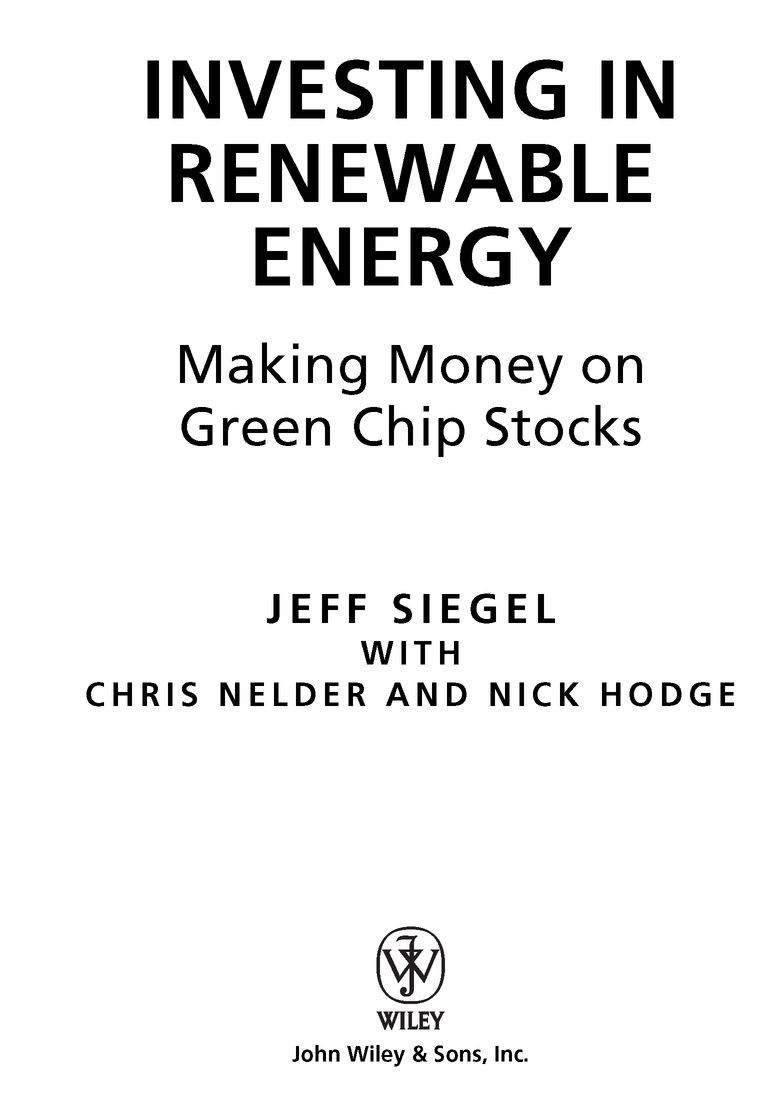Table of Contents
PREFACE
In 2005, I received the following e-mail:
Dear Jeff,
Why the hell would you invest in renewable energy? You have no idea what youre talking about. No ones ever made money from solar and no one ever will!
Certainly we can look to the solar bull market of 2007 to counter the last sentence of that e-mail. Whether it was the 900 percent gain that First Solar (NASDAQ:FSLR) delivered or the 1,700 percent gain that World Water & Solar Technologies (OTCBB:WWAT) delivered, green chip investors who were properly positioned last year made an absolute fortune.
Still, even with all the money weve made in the past by investing in renewable energy, the question Why would you invest in renewable energy? is still quite valid, especially when you consider the fact that there really is a lack of easily accessible and credible information regarding the current state of the overall energy marketplace.
For instance, while the local news has made a habit of reporting on high gas prices every time the summer driving season kicks into high gear, rarely do we hear how these so-called high gas prices are actually quite cheap. The true cost of gasoline is probably closer to about $11.00 a gallon. You may not be paying that price at the pump, but you are paying it. Youll see how in Chapter 1.
We also hear a lot about how the United States is the Saudi Arabia of coal, boasting a 250-year supply. However, rarely do we hear how these coal-supply numbers are highly inflated, or how the United States most likely passed its peak of coal production nearly 10 years ago. Youll read more about this in Chapter 1, as well.
And what about nuclear energy? President Bush is behind it, and it doesnt have the same CO2 emission issues that are associated with coal. Some have even mistakenly (or intentionally) referred to it as renewable. But whatever you call it, nuclear capacity is actually set to decrease over the next 25 years. In this book, well explain why.
Overall, our once-vast supplies of cheap, conventional, nonrenewable energy resources are shrinking at an alarming rate, while our demand for electricity and transportation fuels is dramatically increasing. As a result, we have created fertile ground for a very real crisis situation, but also a massive opportunity for renewable energy investors.
Just in 2007 alone, venture capital and private equity pumped $8.5 billion into clean energy. Even as the market began to feel the effects of a full-blown mortgage and credit crisis, the clean energy sector totaled more than $117 billion in new investments last year. Thats about $20 billion ahead of predictions and 41 percent more than 2006 numbers.
With this kind of big money in play, we have to ask ourselves, Why are all these people investing in renewable energy? The answer is quite simple.
The basic fundamentals of supply and demand dictate its profitability!
ONE CHOICE, ONE OPPORTUNITY
Within the next few decades, our increasingly limited access to cheap, nonrenewable energy resources will present a serious economic crisis. Even today, while the oil is still flowing with few interruptions, gas prices rise with every major or minor refinery disruption, causing the cost of nearly everything else to rise as well. Virtually everything we use and consume today relies on oil. Its the diesel in the trucks that ship our food, clothing, and medicine. Its the gas in our cars that get us to work, school, and the grocery store. Its used in fertilizers, cosmetics, and plastics. Its the stuff that keeps the worlds biggest and richest corporations running, providing employment for millions of people around the world. It is the slippery glue that keeps the world moving.
Theres also the issue of coal and natural gas. Nearly our entire energy infrastructure, which is aging at an alarming rate, was built around the utilization of these finite resources that are being consumed faster than we can supply them.
Whether we like it or not, the age of conventional fossil fuels is quickly coming to an end. So we have two choices: We can continue to chase an energy economy thats simply unsustainable, and ultimately a long-term failure, or we can use this coming energy crisis as an opportunity to profit from the only other choice we have for power generation: renewable energy.
Renewable energywhich is essentially energy produced from sustainable resources that are naturally replenishedis the only form of energy that will exist beyond oil, coal, natural gas, and nuclear, because the resources used for renewable energy generation are infinite. Moreover, despite the avalanche of misinformation thats constantly spewed from naysayers and mainstream media, we can actually generate enough renewable energy to satisfy
all of our energy needs. Take a look:
Solar: Enough electric power for the entire country could be generated by covering about 9 percent of Nevada with solar power systems. This is a plot of land roughly 92 miles by 92 miles.
Wind: According to the U.S. Department of Energy (DoE), wind could provide 5,800 quads of energy each year. Thats about 15 times the current global energy demand.
Geothermal: According to MIT, there are over 100 million quads of accessible geothermal energy worldwide. The world consumes only 400 quads.
Marine energy: The Electric Power Research Institute has estimated the wave energy along the U.S. coastline at 2,100 TWh per year. Thats half the total U.S. consumption of electricity.
Biogas: Your local landfill could be powering your home right now with biogas.
Conservation and energy efficiency: Aggressive energy conservation can save enough electricity every year to avoid building 24 new power plants.
Hybrids: If all cars on the road were hybrids and half were plug-in hybrids by 2025, U.S. oil imports could be reduced by about 80 percent.
Of course, most of this information wont be found on any of the dozen or so cable news networks. Youd also be hard-pressed to read about this stuff in most newspapers or magazines. But this is the information that green chip investors (investors who consistently profit from the integration of renewable energy) have been using for years to make smart investment decisionsdecisions that have ultimately produced fortunes.
In this book, you, too, will have an opportunity to review the same objective and peer-reviewed data that the most successful green chip investors have been using and still use today. More important, you will also learn about the latest renewable energy projects and technologies that will usher in the next generation of green chip profits, such as:
Super-efficient, large-scale solar farms that will replace coal-fired power plants. (Chapter 2)
Offshore wind turbines that could soon power the entire East Coast of the United States, though theyre so far removed from shore youll never even see them. (Chapter 3)
Geothermal power plants that havent even been built yet, but already have long-term power-purchase agreements with the utilities. (Chapter 4)
Dam-less hydropower systems generating electricity in New York Citys East River. (Chapter 5)
Commercial-scale renewable energy systems that produce biogas from agricultural livestock. (Chapter 6)



